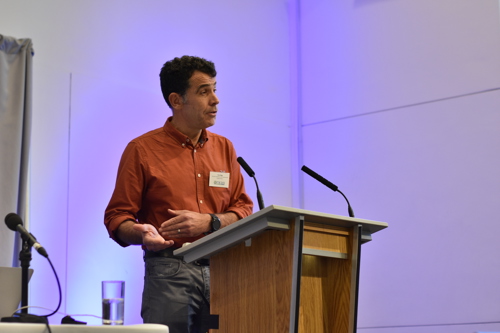
Paul Riggs, Mark Robertson and Andrew Clark
Sustainability challenges faced by contact lens and ophthalmic lens manufacturers in recent years have included recycling complex materials, encouraging correct disposal and the need for sterile packaging.
The first panel discussion at Optician’s Eyes on Sustainability conference at Dynamic Earth in Edinburgh on November 5-6 explored how optical companies were meeting these challenges to create a more sustainable future. Simon Jones, panel chair and editor of Optician, invited each panel member to share the journey their respective companies had been on before taking questions collectively from an engaged audience.
 Paul Riggs, director of science and sustainability at CooperVision (pictured right), said the contact lens company started working on sustainability a few years ago. At the core of its work was the United Nations definition of sustainability from 1987; meeting the needs of the present without compromising the ability of future generations to meet their own needs.
Paul Riggs, director of science and sustainability at CooperVision (pictured right), said the contact lens company started working on sustainability a few years ago. At the core of its work was the United Nations definition of sustainability from 1987; meeting the needs of the present without compromising the ability of future generations to meet their own needs.
Register now to continue reading
Thank you for visiting Optician Online. Register now to access up to 10 news and opinion articles a month.
Register
Already have an account? Sign in here
